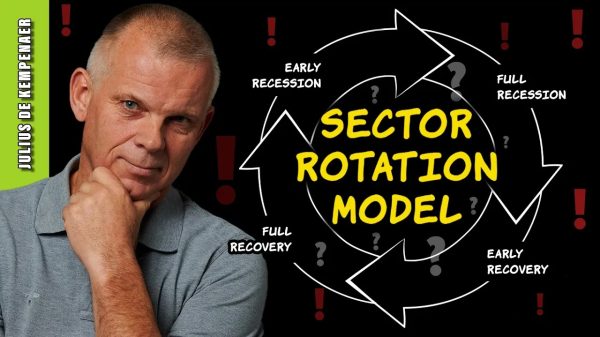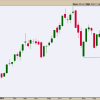In April 2024, the AIER Business Conditions Monthly Leading Indicator rose back to the expansionary levels where it has lingered since November 2023 after declining to near-neutral levels (58) in March 2024. The Roughly Coincident Indicator declined to 67, its lowest reading in six months (back to October 23). And the Lagging Indicator rose to 50, returning to neutral levels after spending three of the last five months in contractionary territory, including the zero reading in December 2023.
Leading Indicator (71)
Among the twelve components of the Leading Indicator from March to April 2024: seven rose, two were neutral, and three declined.
The rising components within the Leading Indicator included the 1-to-10 year US Treasury spread (31.4 percent), United States Heavy Trucks Sales (13.5 percent), US Initial Jobless Claims (5.9 percent), US New Privately Owned Housing Units Started by Structure (5.7 percent)
the Conference Board US Leading Index Manufacturing, New Orders, Consumer Goods and Materials (0.4 percent), US Average Weekly Hours All Employees Manufacturing (0.3 percent), and the Conference Board US Manufacturers New Orders Nondefense Capital Good Ex Aircraft (0.1 percent). Adjusted Retail and Food Service Sales and the Inventory/Sales Ratio: Total Business were neutral. FINRA Customer Debit Balances in Margin Accounts fell by 1.1 percent, as did the Conference Board US Leading Index of Stock Prices (-1.1 percent), and the University of Michigan Consumer Expectations Index (-1.8 percent).
The Leading Indicator indicates continued economic expansion, albeit with intermittent contractions. Beginning in mid-2023, growth was robust, followed by a dip but with a recovery towards the end of the year and into early 2024. The 71 level indicates the continuation of the upward trend in leading indicators of growth in April 2024.
Roughly Coincident (67) and Lagging Indicators (50)
The Roughly Coincident Indicator, which at 83 reached its highest level since September 2023. Three components rose, two were neutral, and one declined. The Conference Board’s Coincident Personal Income Less Transfer Payments rose 0.3 percent, its Coincident Manufacturing and Trade Sales were up 0.2 percent, and US Employees on Nonfarm Payrolls increased by 0.1 percent. Industrial Production and the Labor Force Participation Rate were neutral. The Conference Board Consumer Confidence Present Situation Index declined 4.2 percent.
Meanwhile, the Lagging Indicator saw three rising and three falling components in April 2024. The Conference Board US Lagging Avg Duration of Unemployment, US Manufacturing and Trade Inventories, and the Conference Board US Lagging Commercial and Industrial Loans rose by 7.8, 0.3, and 0.3 percent respectively, Both the Census Bureau’s Private Construction Spending (Nonresidential) and US Commercial Paper Placed Top 30 Day Yields fell by 0.3 percent, with the core CPI year-over-year felling 5.0 percent.
The Roughly Coincident Indicator has seen sustained economic expansion over the 12 months from April 2023 to April 2024, despite a brief decline to neutrality in October 2023. Despite some volatility, the April 2024 of 67 suggests moderate but slowing expansion compared to the previous peaks. The Lagging Indicator, meanwhile, continues to depict volatile signals, with periods of stability around the neutral mark and sporadic shifts into contractionary and expansionary states. The significant dip in December 2023 to 0 indicates a sharp contractionary sign, even though followed by a return to neutral levels in April. It is difficult to extract meaningful information from swings in trailing markers of improvement and deterioration, especially when generally at odds with the Leading and Roughly Coincident Indicators.
Discussion
In May, consumers continued to exercise caution, limiting spending for the second consecutive month as high borrowing costs tightened budgets. Despite modest gains in retail sales, with a 0.1 percent rise that fell short of expectations, shoppers increasingly turned to online deals to manage expenses. Notably, control-group sales rebounded by 0.4 percent, reflecting a strategic approach to budget allocation, although spending on food services dropped by 0.4 percent, indicating a strain on consumer finances. This trend suggests that, despite occasional spending boosts, the overall consumption leeway remains constrained by ongoing financial pressures.
In mid-June, consumer sentiment deteriorated as concerns over high prices persisted, with lower-income households feeling the most significant impact. The latest economic data indicates a pushback against price hikes, contributing to disinflation across various goods and services in May. The University of Michigan’s preliminary consumer sentiment index for June dropped to a seven-month low of 65.6, below expectations. Both current conditions and future expectations saw declines, and while year-ahead inflation expectations remained steady at 3.3 percent, long-term expectations increased slightly to 3.1 percent. Middle-income consumers are also expressing concerns about tight budgets, highlighting ongoing financial challenges despite a strong labor market.
The Philadelphia Fed survey indicated minimal change in business activity for June, with the headline index dropping to 1.3, below expectations of 4.5. The survey highlighted growing inflation concerns as indexes for both prices paid and received increased. Future activity expectations also fell sharply to their lowest level since February. In contrast, the New York Fed’s Empire survey showed an anticipated increase in business activity, suggesting regional differences in economic outlook.
After significant increases in the previous two weeks, jobless claims remained elevated during the survey week for the June employment report. We anticipate continued cooling in labor-market conditions due to a decrease in labor demand and an increase in the supply of available workers. Initial claims for unemployment insurance for the week ending June 15 decreased by 5,000 to 238,000, slightly above the consensus estimate. Non-seasonally adjusted claims dropped more significantly than expected, indicating fewer claims compared to the same period last year. Continuing claims rose to 1,828,000, with the insured unemployment rate holding steady at 1.2 percent. We still project the U-3 unemployment rate to reach or exceed 4.2 percent by September, with workers experiencing longer durations of unemployment.
May’s jobs report revealed conflicting signals about the labor market, with the establishment survey showing significant nonfarm payroll gains while the unemployment rate, based on the household survey, rose to 4.0 percent. We believe the household survey offers a more accurate picture, suggesting that the true pace of job growth is likely under 100,000 per month due to an outdated BLS model that overstates job creation amid rising business closures. Despite robust hiring in sectors like health care and leisure, the number of full-time jobs and the labor force declined, signaling deeper issues in the job market.
The divergence between the household and establishment surveys highlights the challenges in interpreting labor market conditions accurately. With jobless claims remaining elevated and the unemployment rate climbing, there are signs of increasing economic stress despite headline payroll numbers suggesting growth. The household survey indicated a significant drop in employment, underscoring the risk that nonfarm payrolls are overstating labor market strength. As a result, we expect the unemployment rate to rise, possibly reaching 4.5% by year-end, which could prompt the Fed to consider rate cuts sooner than anticipated.
Wage growth accelerated in May, with average hourly earnings increasing by 0.4 percent, primarily driven by gains in the services sector, such as leisure and hospitality. The jump in wages, alongside steady weekly hours, suggests a rise in aggregate labor income, providing some support for personal income growth. However, the overall increase in the unemployment rate and the decrease in labor force participation among older workers indicate a mixed economic outlook, with financial markets now adjusting their rate-cut expectations accordingly.
The Federal Open Market Committee’s (FOMC) latest dot plot suggests a more hawkish stance, with many members believing that interest rates need to remain elevated for an extended period to curb inflation back to the 2 percent target. While Fed Chair Jerome Powell remains skeptical about the current policy being restrictive enough, he acknowledges that inflation is still higher than anticipated and that the labor market does not necessitate immediate rate cuts. Despite differing views, we expect economic conditions will lead to two rate cuts this year, in September and December, as growth indicators have been weaker than expected and consumer spending shows signs of faltering.
At the June meeting, the FOMC decided unanimously to maintain the target interest rate range at 5.25 to 5.50 percent. The policy statement indicated that price pressures are moderating, and while the committee now anticipates fewer rate cuts in 2023 than previously projected, there is a debate among members on the number of cuts required. Cleveland Fed President Loretta Mester’s departure and her replacement’s unknown stance add to the uncertainty. The upward revision in the neutral rate forecast reflects the committee’s growing belief that current rates might not be as restrictive as needed, which could influence future rate decisions.
Economic projections from the FOMC show a modest upward revision in the inflation forecast for 2024, with core PCE inflation expected to be 2.8 percent, slightly above previous estimates. Despite this, Powell’s commentary at the news conference suggested a more dovish outlook, emphasizing the need to monitor upcoming inflation reports closely. The median FOMC member now foresees only one rate cut this year, with a more significant reduction anticipated in 2025. Markets continue to price in the possibility of rate cuts starting in September, indicating ongoing uncertainty about the economic trajectory and the timing of the Fed’s response.
A brief word on US equity prices: after a rally to all-time highs in mid-June, US stocks experienced a brief pullback amid signs of buyer fatigue and concerns about overvaluation. The S&P 500 briefly surpassed 5,500 before slipping, although it remains above key technical levels. Despite bullish momentum, the market shows signs of near-term vulnerability due to overbought conditions and a narrowing leadership, with tech giants like Nvidia and Apple driving most of the recent gains. Equity valuations have moved into extreme levels on a historical basis, suggesting a limited forward return profile for new money. While the broader economy remains robust with optimistic earnings expectations, high valuations and concentrated market leadership leave equities susceptible to larger pullbacks if the economic backdrop weakens, particularly in employment, or should expectations for continuing disinflation be unmet. Gold has remained stable following the release of the aforementioned US economic data, which have clouded the six month- to one year-outlook on the degree and timing of a potential Federal Reserve policy shift to easing.
The May – June 2024 economic data suggests a continuing normalization from the pandemic period. The road ahead remains uncertain, though, with potential outcomes ranging from a slow, steady economic rebalancing to sluggishness or even a recession. The Federal Reserve, having kept rates steady in its recent meeting, remains cautious, forecasting fewer rate cuts for 2024 amidst mixed signals of slowing inflation and elevated unemployment. Our view of the economic outlook for the remainder of 2024 is similarly cautious, hinging on monetary policy (and relatedly, the near-term path of the general price level); the pace of flagging consumer wherewithal; the health of US labor markets; and growing trepidation around the November US presidential election.
LEADING INDICATORS
ROUGHLY COINCIDENT INDICATORS
LAGGING INDICATORS
CAPITAL MARKET PERFORMANCE

































